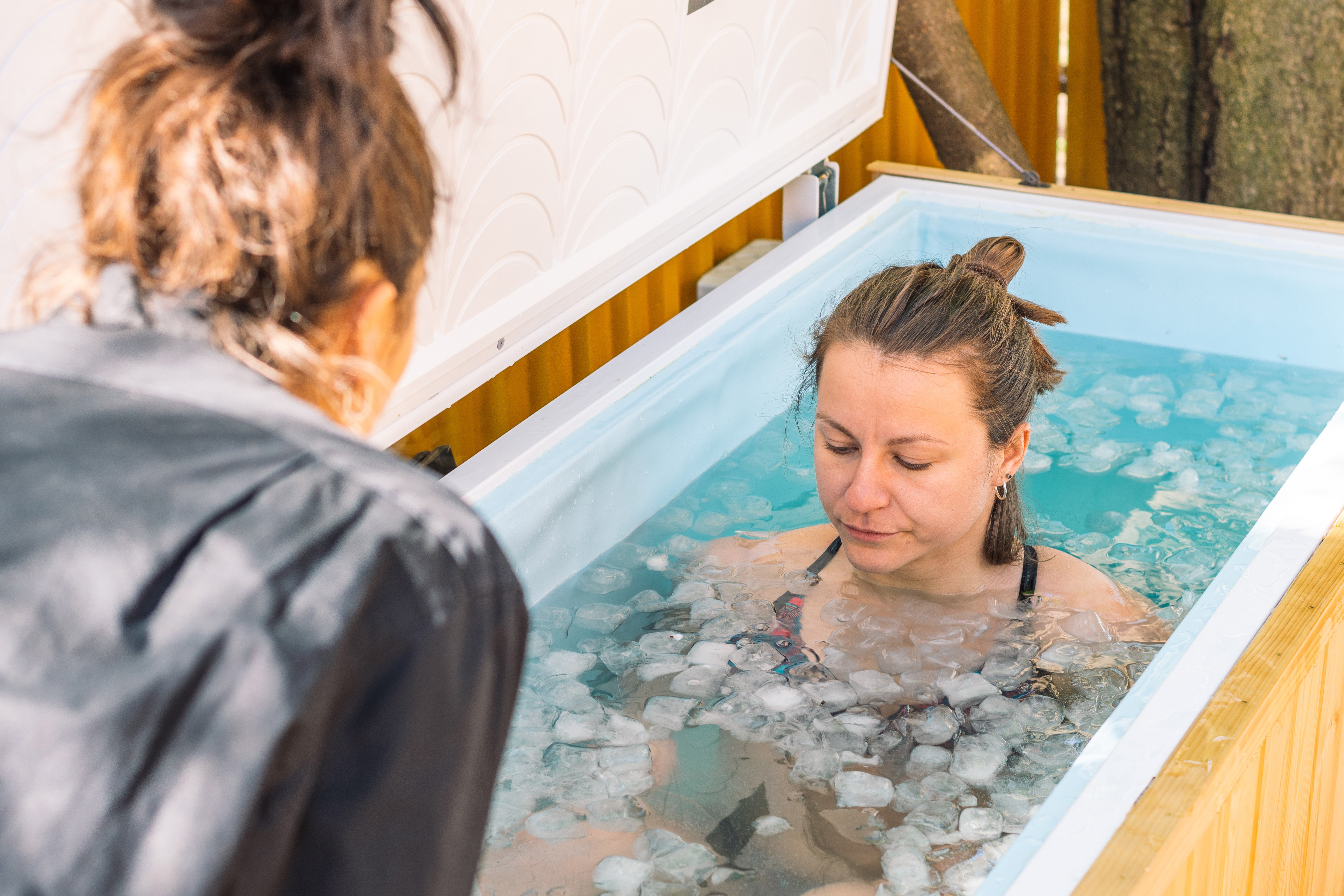
Published on November 19, 2024
Read Time: 3 Minutes
Cold plunging has become a hot trend in wellness. From medical journals to TikTok, this frigid trend is making waves, attracting headlines and inspiring hashtags. What’s the buzz all about?
Three Things to Know
- Cold plunging, briefly submerging in cold water, is popular for its physical and mental health benefits.
- While cold plunging may boost metabolism and mental clarity, it poses risks for those with heart or respiratory issues.
- Start slowly and consult a healthcare provider before trying cold plunging.
Abby Blanc, a board-certified family nurse practitioner at Phelps Health, looks at the cold plunge trend: the facts, the questions and how to decide if it’s for you.
“Let’s begin with a basic definition,” Abby said. “Cold plunging is submerging your body in cold water for a short period of time.”
Athletes Have Used Cold Water Therapy for Years
“Originally you saw athletes cold plunging to reduce muscle damage after working out or after a big game,” Abby said. “Research suggests that cold plunging decreases inflammation and soreness, improving recovery time. It also helps improve circulation throughout the body, which is especially important after an injury.”
Today, the practice of cold plunging has expanded beyond athletic training facilities to homes, health clubs and spas. Many people report physical and mental health benefits.
“Cold water plunging has been shown to increase levels of dopamine and endorphins (chemical messengers associated with pleasure) as well as decrease cortisol levels (the stress hormone) for up to 3 hours afterward,” said Abby. “It can create a feeling of euphoria, which can decrease depressive and anxious symptoms. It also alerts your parasympathetic and sympathetic nervous systems, which can reduce stress and increase alertness and mental clarity.”
Among the physical benefits of cold plunging, weight loss and blood sugar may also be affected.
“Cold plunging does not contribute directly to weight loss,” Abby explained. “But cold water can help your body burn fat more quickly and increase metabolism. It can turn ‘white fat’ into ‘brown fat,’ which helps break down sugars and fats, and provides thermoregulation (how the body maintains its temperature).”
While more research is needed, preliminary studies show that cold plunging may also reduce insulin resistance and improve insulin sensitivity.

Newcomers to Cold Plunging Should Pace Themselves
Abby emphasizes that individuals new to this practice should take it slowly. She suggests starting by adjusting the water temperature while showering, gradually lowering it below 60 degrees F. Then, if you’re ready to take a plunge, Abby recommends starting with 30 seconds and working up to a maximum of 5-10 minutes.
“You don’t need special equipment—you can cold plunge in your bathtub by adding ice or just using cold water right out of the faucet,” said Abby, emphasizing that individuals should talk with their healthcare providers before trying it.
“The biggest risks are present for individuals with cardiovascular disease, respiratory diseases or any type of decreased circulation,” Abby cautioned. “The American Heart Association strongly cautions against cold plunges for people with heart conditions.”
Know the Risks Before You Plunge
Research shows that cold water immersion causes the heart to work harder, which can lead to an elevated heart rate, higher blood pressure, shortness of breath and an increased risk of abnormal heart rhythms.
While the potential dangers of cold plunging for those with heart conditions are well known, Abby says drowning and hypothermia are also risks.
“Common sense safety is important any time you’re around water,” said Abby. “There are added risks in cold water because the rapid loss of heat can lead to hypothermia. Water takes heat away from the body 25 times faster than air. Finally, never plunge into icy waters that have a current, such as a river, to avoid being swept downstream or trapped under ice.”
Tempted to Try a Trend?
Don’t take chances: Speak with your doctor or provider before diving in to any new healthcare trend. If you don’t have a primary care provider, view our list of providers here or call (573) 364-9000 to establish care today.